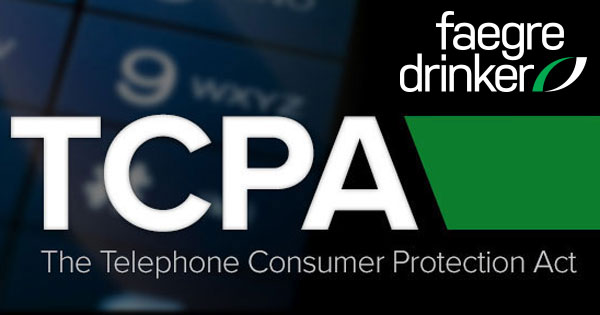We previously described the Ninth Circuit’s decision in Marks v. Crunch San Diego which, contrary to the D.C. Circuit’s ACA International ruling in March of this year, treated the definition of an ATDS expansively, holding that that statutory definition of an ATDS includes equipment that has the capacity (1) to store numbers to be called or (2) to produce numbers to be called, using a random or sequential number generator. We explained how the Ninth Circuit’s decision represented an improper interpretation of the ATDS statutory language. And we previously reported how the FCC sought expedited public comment on the Marks decision.
Comments were filed at the FCC by October 17. They largely made the same criticisms we highlighted in our initial coverage of Marks. The majority of the commenters criticized Marks for several fundamental reasons:
First, a number of commenters argued that Marks ignored pre-2003 FCC interpretations when it ruled that the invalidation of FCC rulings from 2013-2015 rendered the court without any FCC guidance about the definition of an ATDS. In fact, FCC orders from 1995 made plain that, in its view, the statute required numbers to be randomly or sequentially called in order to fall under the TCPA’s ambit.
Second, most commenters also argued that Marks misinterpreted the definitional structure of the statute. The statute defines an ATDS as “equipment which has the capacity—(A) to store or produce telephone numbers to be called, using a random or sequential number generator; and (B) to dial such numbers.” 47 U.S.C. 227(a)(1). But the Marks decision interpreted the statute to define an ATDS as equipment with the capacity to store numbers to be called or equipment with the capacity to produce numbers to be called, using a random or sequential number generator. These commenters noted that while the Ninth Circuit reasoned that its interpretation was necessary in order to give effect to the prior express consent exception (which the Ninth Circuit believed demonstrated that calls made from a list of numbers qualifies as calls made by an ATDS), such a reading ignores that calls from lists do not implicate Congress’ concerns of using an ATDS—the tying up of emergency lines. Moreover, contemporaneous patents dating from the early 1990s, when the TCPA was promulgated, establish that random and sequential number generators had the capacity to store the numbers they generated for future use.
Third, commenters argued that the Marks decision would cause all smartphones to be considered an ATDS, a concern that prompted the D.C. Circuit to overturn the FCC’s interpretation in March. Under Marks’ expansive view, smartphones could be considered an ATDS, potentially subjecting most Americans to TCPA liability for sending group text messages or using their phones to make multiple calls. But it was this very concern that prompted the D.C. Circuit to reject an expansive definition of an ATDS: “The TCPA cannot reasonably be read to render every smartphone an ATDS subject to the Act’s restrictions, such that every smartphone user violates federal law whenever she makes a call or sends a text message without advance consent.” ACA Int’l v. F.C.C., 885 F.3d 687, 697 (D.C. Cir. 2018).
The National Consumer Law Center (NCLC) parroted Marks’ statutory interpretation and offered an unworkable solution to the problem of smartphones. According to NCLC, whether or not a smartphone is an ATDS depends on how one uses it. If a person downloads an application that allows him or her to make multiple calls at once, the personal phone is an ATDS. Similarly, if an individual uses a phone’s group text function repeatedly and sends the same message to multiple groups, NCLC asserts that that person can be liable for using an ATDS. This would imply, however, that a person who forwards the same article or picture to multiple group chats can be liable under the TCPA, but a person who sends just one group chat the same content is not.
Given the swiftness of the FCC’s action to solicit public comments on the case, we expect that the FCC will be attempting to square the circle on these disparate court interpretations of an ATDS soon.

